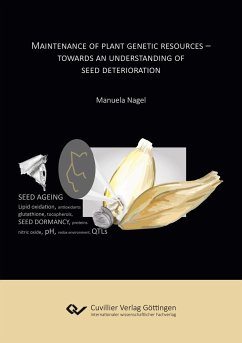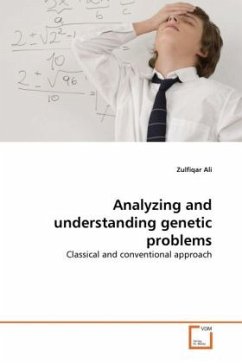Conservation of biodiversity including plant genetic resources are fundamental for the future life on Earth. To safe-guard crop wild relatives, locally adapted landraces and varieties, ex situ genebanks were established at the beginning of the 20th century; primarily to store seeds. However, as any other material on Earth, seeds age and lose viability when stored for prolonged periods. The main factors determining deterioration processes are the genotype, the environmental conditions during seed development and the storage conditions including relative humidity, temperature, gas composition and pressure. To understand physiological, biochemical and genetic changes during seed deterioration in genetic resources of wheat, barley and oilseed rape, fundamental processes of germination, dormancy and seed viability loss are discussed in this book based on 13 scientific publications. Here, the loss of seed viability was investigated depending on seed moisture contents (MCs) between 5 % and >25 , storage temperatures between 0°C and 45°C and a modified atmosphere with increased O2 concentration (75) or increased atmospheric pressure (18 MPa). Although, the response to the different conditions varied among species, overall, elevating seed MCs and storage temperatures led to a gradual change of biochemical mechanisms during seed deterioration. Under dry seed storage conditions, glutathione (GSH) and tocochromanols functioned as low-molecular-weight antioxidants and were degraded. Lipids were oxidised or hydrolysed, the pH decreased, whereas organic radicals accumulated over time and correlated negatively with seed viability. At high seed MCs (>13 %) and storage temperatures (>40 °C), membrane damages, changes of pH or organic radicals were absent. Furthermore, GSH and GSSG depleted whereas tocochromanols remained stable or increased. Therefore, seeds stored under high MCs and temperatures were exposed to a different environment than seeds exposed to lower MCs and temperatures where water activity and deterioration rate were reduced and the cytoplasm was assumed to be glassy. As a consequence, quantitative trait loci (QTLs) varied between ageing treatments; thus to understand genetic mechanisms of seeds deterioration in seedbanks, studies must be carried out on dry-stored seeds. Overall, our plant genetic resources are safely preserved in genebanks. However, to avoid genetic drift and to prolong the life of the seed, the conditions for pre-storage and storage should be further optimised and improved for each individual species.








